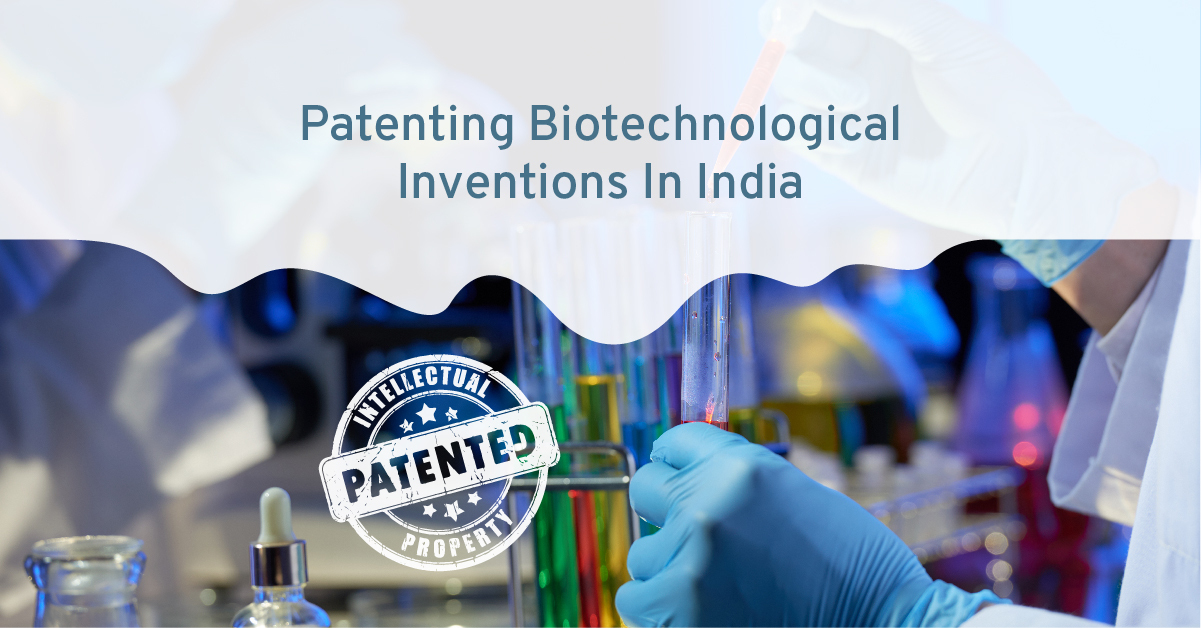
Growing up as an Indian, many of us start our mornings either with tea, coffee, or milk. But what we might not have wondered is that the ability to enjoy these beverages, through its key ingredient milk, arrives from a victory within a complicated field of Intellectual Property Law: Biotechnology Patents.
To thank this we need to go way back in 1873, when a microbiologist Louis Pasteur patented a novel yeast making process; which today we term as pasteurization process. Most of our commercial milk producing facilities employs his patented technology even
today to bring us our morning tea/coffee.
Other modern luxuries which we enjoy today, contrives from the advancement of Biotechnology which might not have been available to the end user without patents are often taken for granted- fermented foods, medicines, vaccines, beverages, drinks, amongst others. A few examples of patented biotechnological products and procedures that have saved and changed hum an lives are insulin, blood transfusions, anti-cancer
drugs, autoimmune drugs — and pasteurization, of course. Despite the critical role that biotechnology plays in saving, improving and extending human life, there is a complicated process behind the work of patenting these scientific advancements.
As a matter of fact, most of the biotechnological inventions involve the use of biological material in form or other. The trigger point giving rise to various concerns for patenting biotechnological inventions. The issue of the patentability of biological materials, isolated or derived from naturally occurring living organisms, has elicited widespread discussions. Some argue that such biological materials are mere “discoveries”, and therefore not patentable, while others argue that they are manmade “inventions”. In addition, a number of typical issues relating to biotechnological inventions result from the fact that biological material is capable of reproducing itself. This specific characteristic requires determination of law as to, for example: (i) the scope of legal protection of future generations; (ii) exhaustion regimes; (iii) special rules, if any, for plant and animal breeders or farmers.
Biotechnological inventions, similar to other inventions need to satisfy the patentability criteria of being Novel, Inventive and Industrially applicable to be a patentable subject matter in India. Apart from this basic requirement, biotech inventions also need to be a Patent eligible subject matter under the purview of Section 3 of the Indian Patent Act. Major factor which comes in between patenting the biotech inventions is section 3 of the patent’s act. Genetic modifications of organisms or animals at times suffers the bar of section 3(b) and may be considered as inventions contrary to public morality. Discoveries of living things or non-living substances occurring in nature are not patentable subject matter under section 3(c); hence micro-organisms isolated from nature and DNA, RNA or proteins isolated from living organisms are not considered invention under section3(c).Yet another rogue in patenting biotech inventions is section 3(d) that prohibits new forms of known substance from being patentable subject matter and section 3(e); which demands the synergistic effect apart from mere admixture for the being a patentable subject matter. Further the biotechnology processes needs to overcome the boundaries of section 3(i) that prohibits methods of treatment and diagnosis from being patentable. Also the field of biotechnology relating to agriculture and horticulture needs to surpass the criteria of section 3(h) barring agricultural or horticulture methods. In addition the biotechnological inventions needs to be beyond the traditional knowledge library 3(p).
The formal requirements laid down by the Indian Patent Act for biotechnological inventions are also required to be fulfilled. One such mandate is to deposit the biological material used in the invention at the depositary unit for biological material under the requirement of section 10(4) of the Act. Another mandate by the Act is to deposit the sequence listing in electronic form. For genes, nucleotide sequences and polypeptide sequences, the applicant must mention the sequence listing. With all these mandates and rules in place many biotech inventions in India have successfully been patented.
With the current scenario where the world is battling many serious situations; one of them being defeating COVID-19, biotechnological inventions are a significant aspect. Protecting and securing your biotechnological inventions is yet another concern for the inventors. Knowing the complications and limitations of biotechnology patents it is essential to make sure that technologies that can save lives and improve the world are properly protected. The recent case laws nowadays, clearly determine that the biological materials or substances which are designed in labs and were earlier not available in the natural environment have earned some right of patentability. Indian patent regime has even introduced guidelines for examination of biotechnology patents giving it a serious consideration. India being rich in its bio diversity, and with more research coming up these days in this sector there is the dire need to protect such inventions and secure the inventor’s rights with unblemished and resilient patent regime.